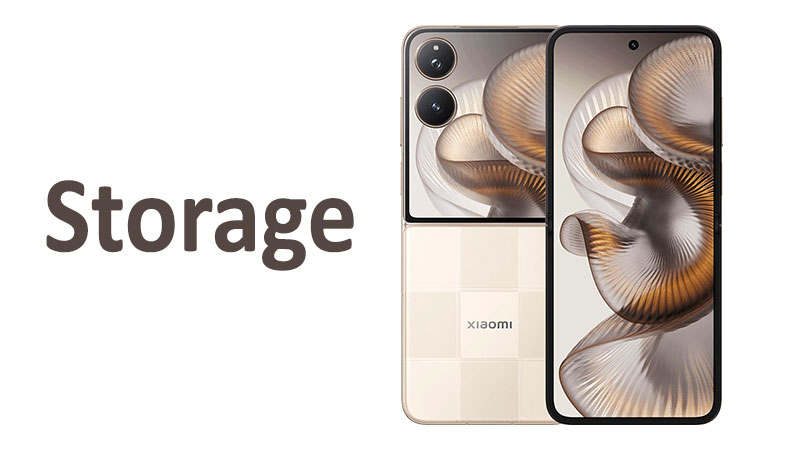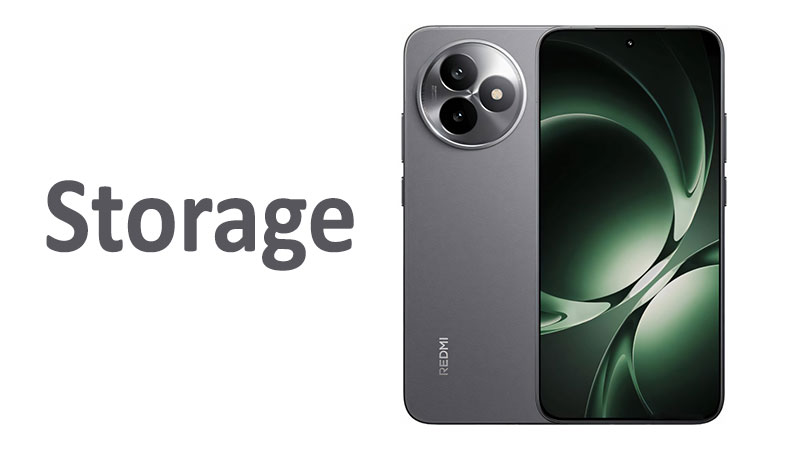In the fast-paced world of smartphones, choosing the right device goes beyond just looking at the camera or processor. One of the most critical, yet often overlooked, factors is a phone’s storage. It’s the digital foundation for your entire mobile experience. For anyone considering a new mid-range device, understanding the Xiaomi Redmi 15 storage is essential. This comprehensive guide will delve deep into the phone’s storage capabilities, helping you make an informed decision and ensuring your new device meets all your needs for years to come.
A phone with insufficient storage can quickly become a source of frustration. It can lead to constant notifications about low space, forcing you to delete precious photos, videos, or essential apps. The Xiaomi Redmi 15 is positioned as a powerful contender in the mid-range market, and its storage configuration is a key part of its appeal. This article will provide a detailed analysis of the internal storage, its performance, and what it means for the average user. We will also address the crucial topic of storage expansion and compare the Redmi 15’s offerings to its predecessors and competitors.
Internal Storage: Capacity and User Experience
The Xiaomi Redmi 15 comes with a single, straightforward storage option: 128GB of internal storage. This capacity is a major selling point. For many users, 128GB offers a comfortable buffer for all their digital content. It’s a significant amount of space that allows you to store thousands of photos, dozens of hours of video, and a large library of applications and games.
However, it’s vital to remember that the operating system and pre-installed apps occupy a portion of this space. A new Redmi 15 will not have the full 128GB available for user data right out of the box. Typically, system files can take up to 15-20GB, leaving you with roughly 108GB or more for your personal use. This is standard practice across all smartphones. Despite this, 108GB is still a generous amount of room for a mid-range phone. It provides a solid foundation for daily use without the immediate worry of running out of space.
The Digital Footprint of Modern Life
The amount of storage we need on our phones is constantly increasing. High-resolution photos, especially those captured by the Redmi 15’s advanced camera system, consume more space than ever before. A single high-quality photo can be several megabytes in size. For users who enjoy taking a lot of pictures or shooting videos, this can add up quickly.
Consider the other types of data that fill up a phone’s storage. Modern mobile games can be several gigabytes each. Social media apps and messaging services also store large amounts of cache data and media files. Downloading movies or TV shows for offline viewing takes up even more room. The 128GB provided by the Xiaomi Redmi 15 is designed to handle this modern digital footprint. It provides enough space for most users to enjoy a full range of activities without having to constantly manage their storage.
Comparison with the Previous Generation
A key aspect of any new phone is how it improves upon its predecessors. The Redmi 15 offers a clear step forward from previous generations. The Redmi 14 series, for instance, often came with a base model of 64GB. While 64GB was sufficient for some users, it felt cramped for others. The smaller storage size often meant a more aggressive approach to file management. Users frequently had to transfer data to a computer or cloud service to free up space.
The Xiaomi Redmi 15 rectifies this issue by making 128GB the standard starting point. This eliminates the need for many users to even consider a higher-tier model. It also provides a better long-term value. As your digital life expands, having more storage from the beginning means your phone will remain capable and relevant for a longer period. The decision to standardize at 128GB reflects Xiaomi’s understanding of current user needs and market trends. It is a proactive and consumer-friendly move.
The Absence of a Card Slot: A Modern Trade-off
One of the most significant design choices for the Xiaomi Redmi 15 is the absence of a microSD card slot. This means that the phone’s internal storage of 128GB is all you get. There is no option for physical expansion. This is a crucial point for potential buyers to understand. The trend of removing card slots is becoming more common in the smartphone industry, especially in mid-range and high-end devices.
There are several reasons for this design choice. Manufacturers often opt for a cleaner, more streamlined internal layout. This can improve the phone’s structural integrity and potentially free up space for other components, such as a larger battery. Additionally, relying solely on internal storage can lead to a more consistent performance experience. SD cards can have varying speeds and can sometimes lead to performance issues or data corruption. By eliminating the card slot, Xiaomi ensures a uniform and reliable storage experience for all Redmi 15 users.
Pros and Cons of the Storage Configuration
Let’s break down the advantages and disadvantages of the Xiaomi Redmi 15 storage setup.
Pros:
- Generous Base Capacity: The 128GB of internal storage is more than enough for most casual and power users. You can store a significant amount of data without worry.
- Simplified Choices: With a single storage option, buying the phone is a simpler process. You don’t have to debate between different storage tiers and their varying price points.
- Consistent Performance: Relying solely on the phone’s built-in storage ensures a smooth and reliable user experience. There are no potential speed issues that can sometimes come with a low-quality microSD card.
- Modern Standard: The 128GB starting point aligns with current industry standards. It positions the Redmi 15 as a modern and competitive device.
Cons:
- No Expansion: The most significant drawback is the lack of a card slot. If you are a content creator or a heavy user who needs more than 128GB, you will be out of luck. There is no way to add more physical storage.
- Long-Term Limitations: For users who plan on keeping their phone for several years, the 128GB limit could eventually become a constraint. As app sizes grow and new content is created, that space will eventually fill up.
- Cloud Dependency: Without a card slot, users with large media libraries or those who take many photos will need to rely heavily on cloud storage services. This can incur additional subscription costs and requires a stable internet connection.
Important Points for Potential Buyers
If you are considering the Xiaomi Redmi 15, here are a few key points about its storage to keep in mind.
First, realistically assess your storage needs. If you are an average user who primarily uses the phone for social media, messaging, and casual photos, 128GB will serve you well. You will likely have plenty of space for your digital life without feeling restricted.
Second, be prepared to embrace cloud storage. Services like Google Photos, Dropbox, or Mi Cloud can be invaluable. They offer a great way to back up your photos and videos and free up internal space. It’s a good habit to get into, regardless of your phone’s storage capacity.
Finally, remember that the storage is fixed. There is no way to add a physical card. This means if you anticipate your storage needs growing significantly in the near future, you might want to explore other devices with a higher base storage capacity or a microSD card slot.
A Look at the Competition
To truly appreciate the Xiaomi Redmi 15’s storage, it’s helpful to see how it stacks up against its competitors. Many competing devices in the same price range, such as the Samsung Galaxy A55, may offer a 128GB base model but also include a microSD card slot. This gives those phones a flexibility advantage. A user can start with 128GB and add more storage later if needed.
However, the Redmi 15 often compensates for this with other features. It might offer a more powerful processor, a higher-quality display, or a better camera system for the same price. The choice for Xiaomi to prioritize a solid internal package over expandable storage is a calculated one. It aims to provide a more premium, high-performance experience by focusing on the core hardware. For users who value a seamless, hassle-free experience with enough initial storage, the Redmi 15 is an excellent choice.
Managing Storage on the Redmi 15
Even with 128GB of storage, it’s a good idea to know how to manage it effectively. Xiaomi Redmi 15’s HyperOS operating system includes a built-in “Cleaner” app. This tool helps you identify and delete unnecessary files, such as cache, obsolete APKs, and duplicate photos. It’s a simple and effective way to reclaim space.
Another great practice is to use the “Deep Clean” feature. This option gives you a comprehensive overview of your storage usage. It breaks down what’s taking up the most space, from large videos to infrequently used apps. You can then selectively delete files to free up significant amounts of storage. Regular use of these tools can keep your phone running smoothly for a long time.
For media files, consider using “Smart Storage” features offered by cloud services. Google Photos, for example, can automatically back up your pictures and then remove the local copies from your device. This keeps your photos safe while also freeing up valuable internal storage.
Conclusion: A Well-Balanced Choice for Most
The Xiaomi Redmi 15 storage configuration of 128GB is a well-thought-out choice for a modern mid-range smartphone. It provides a generous amount of space that will satisfy the needs of the vast majority of users, from casual social media browsers to mobile gamers. While the lack of a microSD card slot may be a deal-breaker for a small segment of users who require massive amounts of storage, the trade-off is a streamlined, more consistent, and reliable device.
The Redmi 15 prioritizes a clean, high-performance user experience. By making 128GB the standard, Xiaomi ensures that buyers are getting a device that is well-equipped for today’s digital demands. For those who can adapt to a fixed storage model and utilize cloud services, the Redmi 15 represents a fantastic value proposition. It’s a phone that gives you the space you need, where you need it, and without the complications of external storage.
FAQ
The operating system and pre-installed apps take up some space. On the Xiaomi Redmi 15, you can expect to have approximately 108GB or more of usable storage right out of the box.
No, the Xiaomi Redmi 15 does not have a microSD card slot. The internal 128GB is the only storage capacity available for this device.
For most users, yes. 128GB provides a comfortable amount of space for thousands of photos, a large number of apps, and videos. It is a solid standard for a modern smartphone.
If you run out of space, you can use the built-in Cleaner app to remove unnecessary files. It is also highly recommended to use cloud storage services like Google Photos to back up media and free up local storage.
Many competing mid-range phones also offer a 128GB base storage option. The key difference for the Redmi 15 is the absence of a card slot, whereas some competitors may offer this feature for physical expansion.



